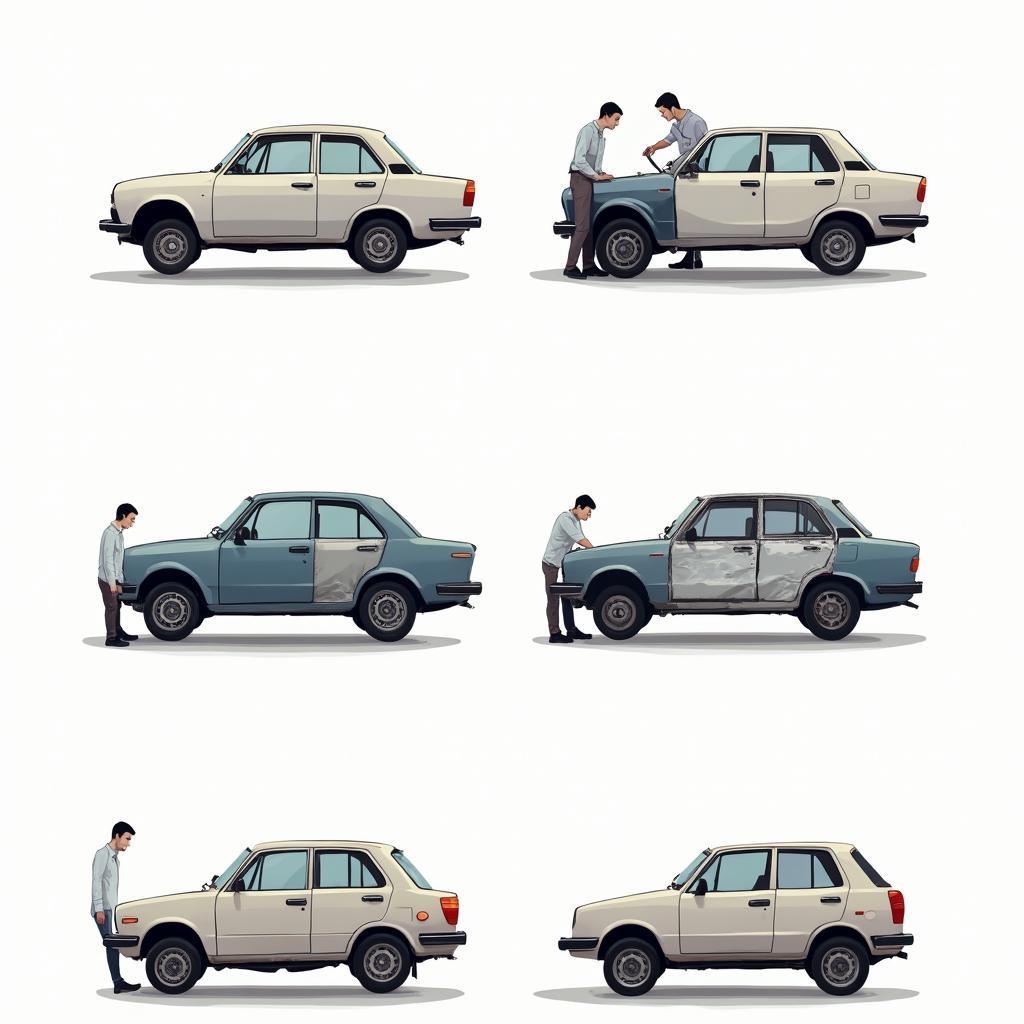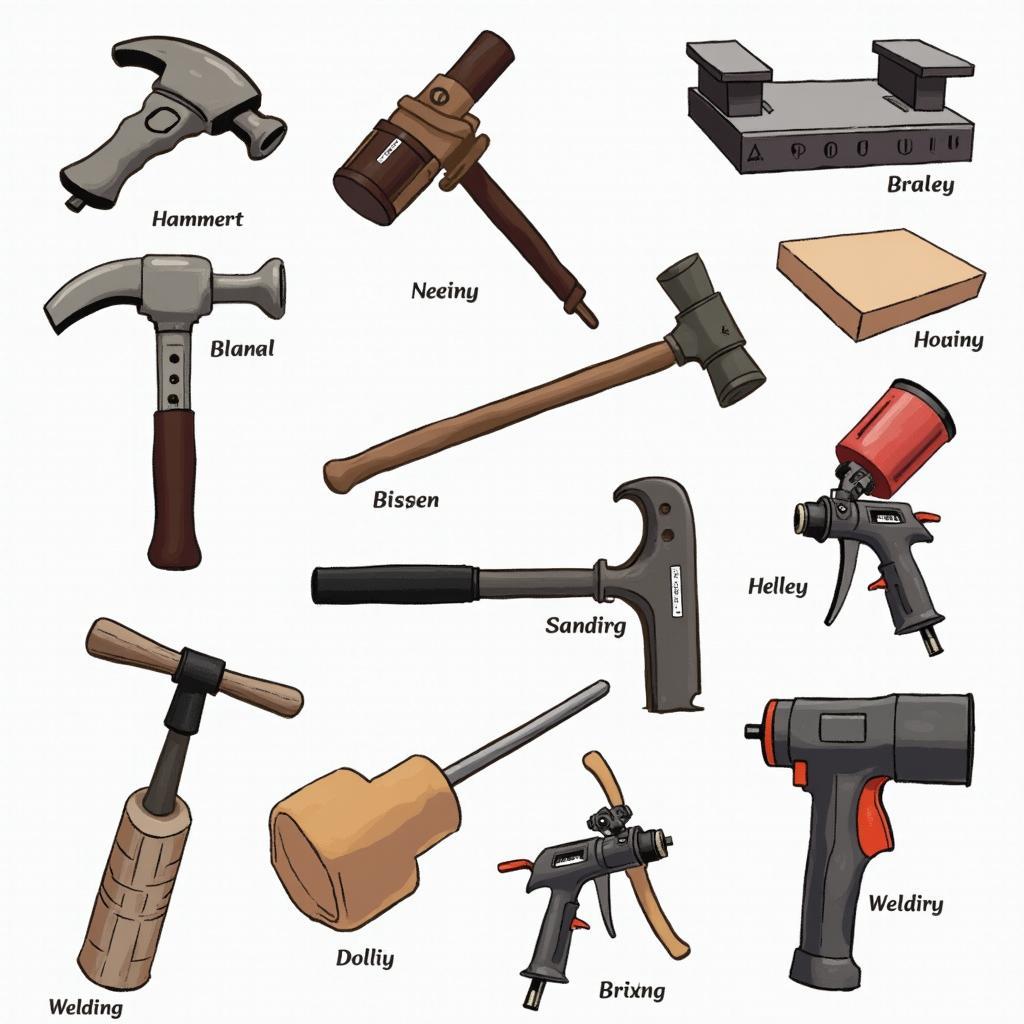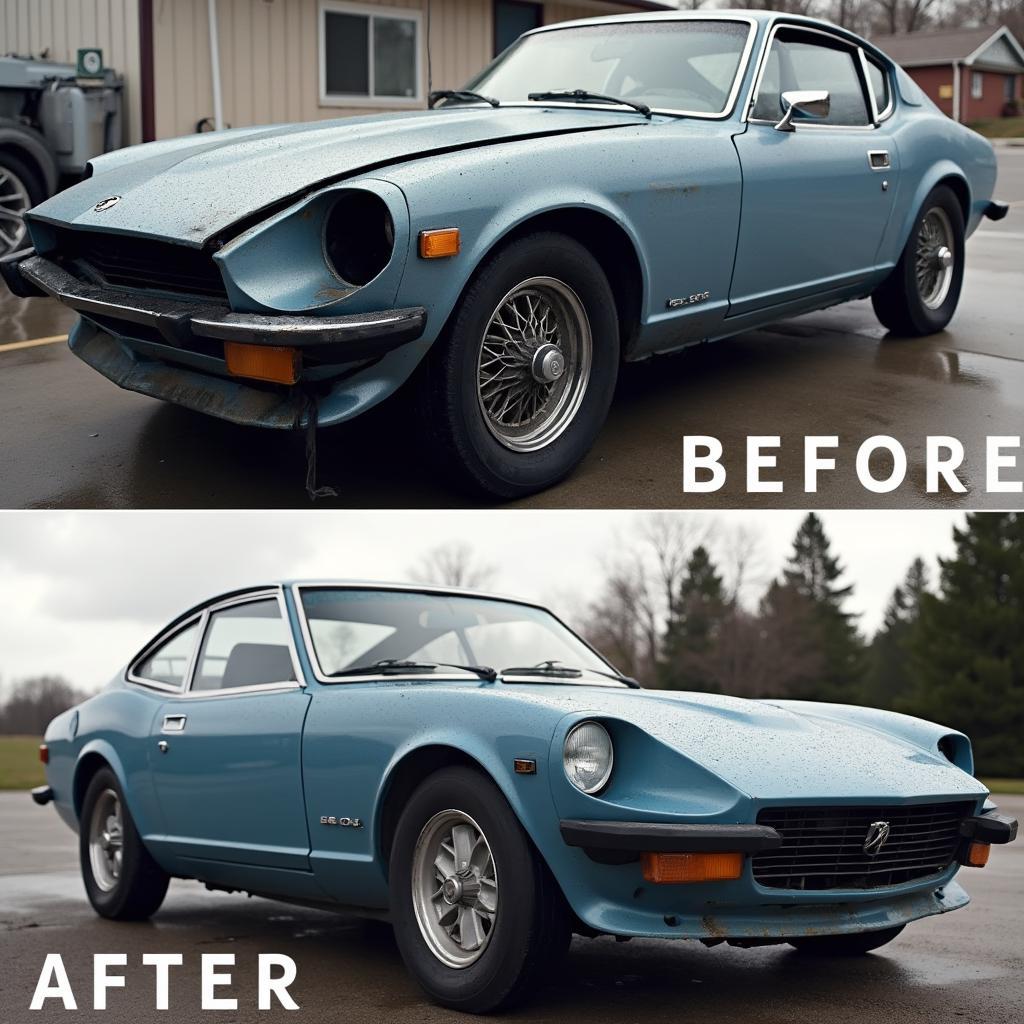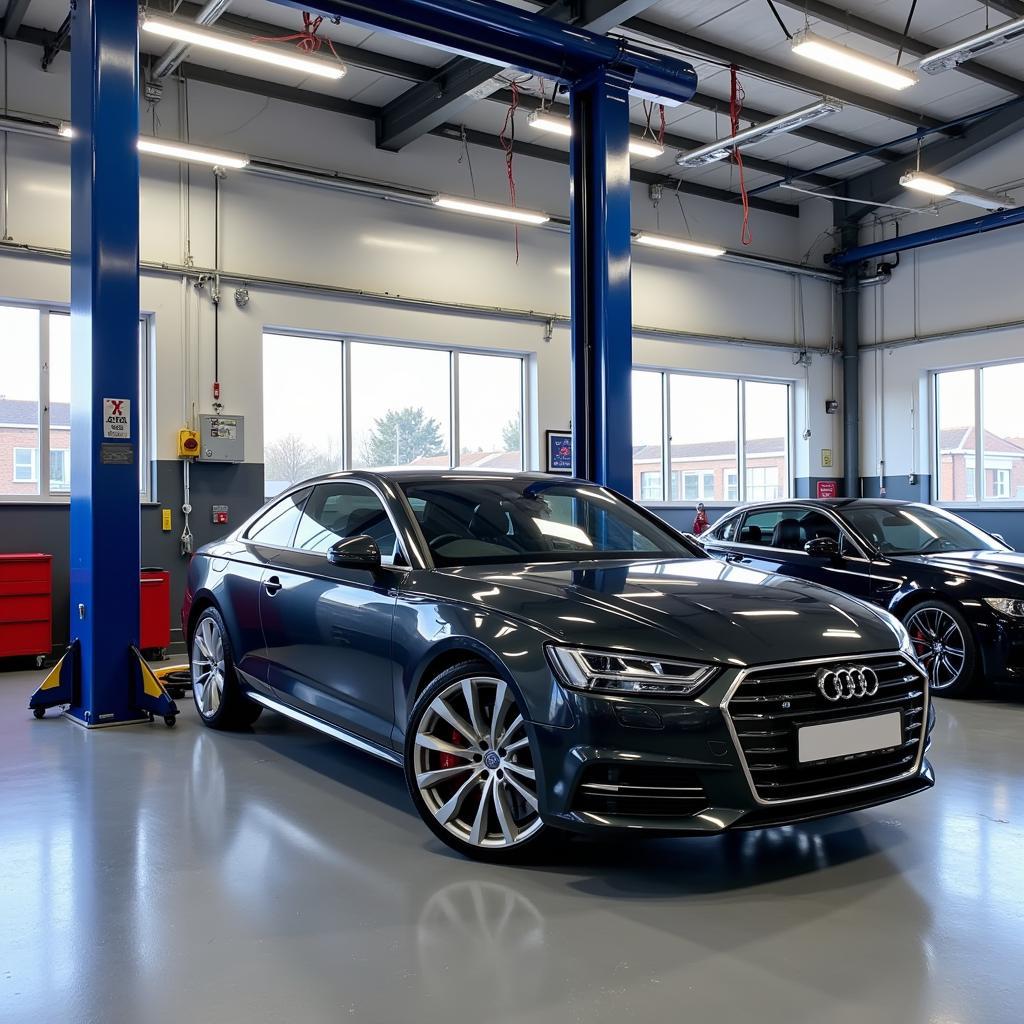
Car Body Repair Process
Car Body Repairing is the art and science of restoring a vehicle’s exterior to its former glory. Whether it’s a minor dent from a parking lot mishap or major damage from a collision, car body repairing requires a blend of skill, specialized tools, and high-quality materials. This comprehensive guide delves into the intricacies of car body repairing, providing you with valuable insights to make informed decisions about your vehicle’s restoration.
 Car Body Repair Process
Car Body Repair Process
Understanding Car Body Repairing
Car body repairing encompasses a wide range of techniques and procedures aimed at restoring a vehicle’s appearance and structural integrity after damage. This can include:
- Dent Repair: Addressing minor dents and dings, often using techniques like paintless dent repair (PDR) to avoid repainting.
- Collision Repair: Repairing more significant damage resulting from collisions, which may involve straightening frames, replacing panels, and welding.
- Rust Removal and Prevention: Eliminating rust and applying protective coatings to prevent future corrosion.
- Paint Repair and Refinishing: Matching and applying paint to repaired areas, blending seamlessly with the existing finish.
The Car Body Repairing Process: A Step-by-Step Breakdown
While the specific steps involved in car body repairing can vary depending on the extent of the damage, the general process follows a logical sequence:
- Damage Assessment: A thorough inspection is performed to identify all areas of damage, both visible and hidden.
- Repair Planning: A repair plan is developed, outlining the necessary steps, materials, and estimated costs.
- Structural Repairs: If the vehicle’s frame or underlying structure is damaged, it’s crucial to address these issues first to ensure safety and stability. This may involve using specialized equipment to pull and straighten the frame.
- Bodywork: Dents, dings, and other cosmetic damage are addressed using various techniques like hammering, filling, and sanding.
- Priming and Sealing: The repaired areas are primed to create a smooth surface for paint adhesion and sealed to prevent rust.
- Painting: Paint is carefully matched to the vehicle’s existing color and applied in multiple coats, ensuring a seamless blend.
- Finishing Touches: Once the paint has cured, the vehicle undergoes a final detailing process, including polishing, buffing, and waxing, to restore its shine.
 Essential Tools for Car Body Repairing
Essential Tools for Car Body Repairing
Choosing the Right Car Body Repair Shop
Selecting a reputable and skilled car body repair shop is paramount to ensure a high-quality repair. Consider the following factors when making your decision:
- Reputation and Reviews: Look for shops with a proven track record and positive customer feedback.
- Certifications and Training: Check if the shop and its technicians hold certifications from reputable organizations, indicating their expertise.
- Equipment and Technology: Modern car body repairing often involves advanced equipment and techniques. Ensure the shop is well-equipped to handle your vehicle’s specific needs.
- Insurance Coverage: Verify the shop’s insurance coverage to protect yourself from potential liabilities.
- Customer Service: Choose a shop that values customer satisfaction, provides clear communication, and offers transparent pricing.
 Car Body Repair Transformation
Car Body Repair Transformation
Conclusion
Car body repairing is a meticulous process that demands expertise and attention to detail. By understanding the process, choosing the right repair shop, and asking informed questions, you can ensure your vehicle is restored to its former glory. Remember, a well-executed car body repair not only enhances your vehicle’s aesthetics but also its safety and value.
FAQs about Car Body Repairing
How long does car body repairing take?
The repair time varies greatly depending on the extent of the damage. Minor repairs might take a day or two, while major collision repairs could take several weeks.
Can I drive my car with body damage?
It depends on the severity. Minor dents might not affect drivability, but structural damage can compromise safety. Consult a professional for assessment.
Does car insurance cover car body repairing?
Coverage depends on your specific policy and the cause of the damage. Contact your insurance provider for details.
What is paintless dent repair (PDR)?
PDR is a technique to remove minor dents without repainting. It involves using specialized tools to massage the metal back to its original shape.
How do I maintain my car’s paint job after repairs?
Regular washing, waxing, and avoiding harsh chemicals can help preserve the paint job’s integrity.
Can rust be completely removed?
Yes, rust can be removed through various methods like sanding, sandblasting, or chemical treatments.
What is the difference between OEM and aftermarket parts?
OEM (Original Equipment Manufacturer) parts are made by the vehicle’s manufacturer. Aftermarket parts are produced by third-party companies.
For any further assistance or inquiries, please don’t hesitate to contact us via WhatsApp: +1(641)206-8880 or email us at [email protected]. Our dedicated customer support team is available 24/7 to assist you.
You can find more information about specific car body repairing tools here: car body repairing tools. We also have articles on niche topics like using car body filler for repairing radiator.
If you’re looking for car body repair services in specific locations, check out our pages for car body repair renfrew, montgomery car body repairs belfast, and car body repairs wicklow.


